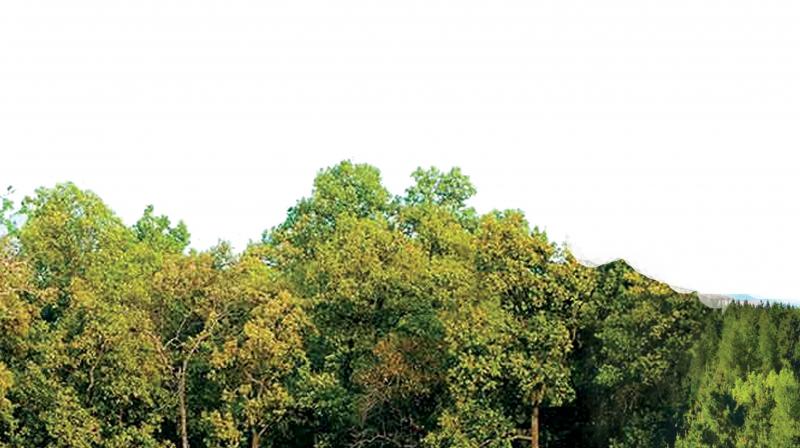Kerala: Sheer irony forests had to be hydrated
Project Forests for Water' to restore retention capacity of the forest.

THIRUVANANTHAPURAM: Here is perhaps the most profound irony of environmental degradation: During the last few summers, temporary ponds had to be created inside forests in the state with water transported from non-forest areas. This dangerous inversion of roles (the forest is supposed to be the natural supplier of water, and the mainland the recipient) has forced the Forest Department to put in place a water-centric forest conservation project called ‘Forests for Water’.
The plan, at its basic level, is to restore the retention capacity of the forest. “The degradation of our forests have led to a situation where the water that rushes down from the hills that surround our land reaches the sea in no time. We need to reinforce the natural speed-breakers that will hold the water in our forests, allowing it to percolate down into the soil and recharge our ground water, our rivers and streams and dams,” said Rajesh Ravindran, the chief conservator of forests (Central Circle).
‘Forests for Water’ also heralds a radical rearranging of the Forest Department’s priorities. All along, the department’s focus was plantations. Its working plans dwell more on harvest, and how the harvest could be regenerated. “It is high time to think of forests as reservoirs of water. All activities, therefore, should be aimed at furthering the cause of water conservation,” Mr Ravindran said.
The action plan emphasizes a participatory approach. The Green India Mission funds, which will be used for the ‘Forests for Water’ project, will be routed through the ‘vana samrakshana samithis’ made up of tribals and other forest-dwellers. Their fundamental activity will be to identify micro watersheds in their area, and regenerate them. (Watershed is the area around a waterbody like a stream or a pond, along the slopes of which rain water flows down.)
For watersheds to be activated, suitable grass species should be grown along its slopes so that the ‘green stubble’ will reduce runoff, allows water to percolate down into the soil or settle into the waterbody below. With the newly-sprouting green restraining the speed of the water flow, it will reduce siltation in dams, too. Aided-natural regeneration has been recommended for degraded, denuded areas. For instance, in rocky areas where the soil depth is low, fast-growing ficus trees (banyan) will be planted. Endemic species in danger of extinction, like certain medicinal plants that have been exploited by the pharma industry, will be reintroduced in their habitats.
Simultaneously, Kerala Forest Research Institute is assessing the health of the state’s forests. The study has already begun in Parambikulam. The study will assess the quality and quantity of the ecosystem services the forest provides like its capacity to sequester carbon dioxide, and it water-holding capability. “This will provide a micro understanding of the extent to which our forests have degraded,” said Dr T.V. Sajeev, a senior scientist with the KFRI.

